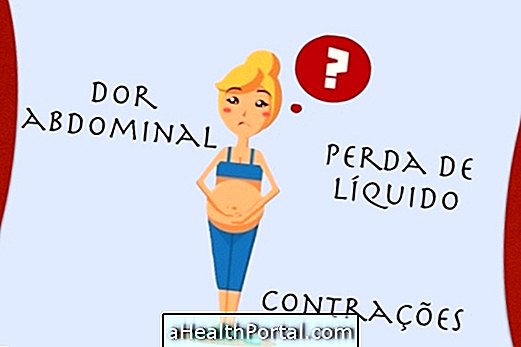AIDS - Acquired Immunodeficiency Syndrome - is a serious illness caused by the HIV virus, which has no cure and no vaccine available. This untreated disease can lead to death because it weakens the body, which is easily sick due to the presence of viruses, fungi or bacteria that normally the defense system any healthy person could combat.
When contaminated with the HIV virus - the human immunodeficiency virus - the person is called HIV positive or seropositive and can contaminate others through contact with their blood or body fluids, even if they do not present any specific symptoms.
It is common for the virus to replicate slowly within the body, affecting the defense cells called CD4, so after about 8 to 10 years of the contamination, many defense cells have already been affected and the first symptoms of fragility of this defense system begin to appear.
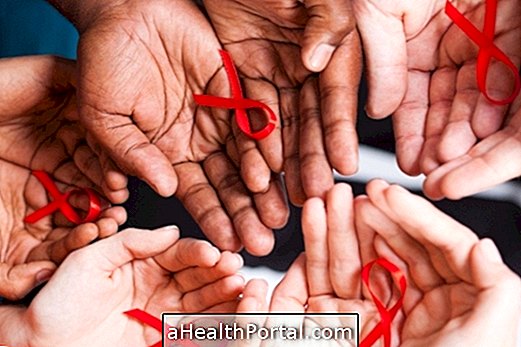
History of the origin of AIDS
AIDS is believed to have arisen in the Congo in the 1920s, but it became known in the United States in 1981, when the first affected people began to appear, who had Kaposi's sarcoma, a rare type of pneumonia, and a serious impairment of the immune system. Although there is not yet a drug that can cure AIDS or eliminate the HIV virus, with the advancement of medicine the person can live for many years, provided that he takes all necessary care.
The summary history of AIDS is as follows:
- 1920: The HIV virus was found in Congo, probably in primates, because they usually have viruses from the same HIV family. African chimpanzees have 98% HIV-like virus that manifests in humans, so they are believed to have a common history.
- 1981: First cases of people with serious impairment of the immune system, who died with uncommon diseases. All were homosexual Americans and introduced Sarkoma de Kaposi, a type of cancer that became known as gay cancer.
- 1983: French scientists have been able to identify the AIDS virus, HIV - 1, in the blood and body secretions: breast milk, vaginal secretions and semen, through which the disease is transmitted.
- 1986: Another HIV virus was identified, which was called HIV-2, and the first AIDS drug, azidovudine - AZT - an antiretroviral that despite not eliminating the HIV virus, was also multiplied within the body. The first cases appeared in Europe.
- 1996: The first cocktail of medicines was created, consisting of 3 medicines that help fight virus replication, increasing the life span of HIV-positive people. Cases have arisen in Africa, India and China.
- 2006: It was discovered that circumcision, which is a cut of the foreskin that covers the head of the penis, decreases men's chances of being infected with HIV by 50%.
- 2010: It has been found that a vaginal gel containing antiretroviral drugs, when used correctly by women, decreases women's chances of being contaminated with HIV by 50%.
- 2011: It was found that if people who were HIV-positive took the treatment soon after being infected, it greatly diminished the chances of contaminating their sexual partners.

Difference between AIDS and HIV
AIDS is the name of the disease and HIV is the name of the virus that causes the disease, so it's not exactly the same. Also, having the HIV virus is not the same as manifesting the illnesses caused by it. A person may have the HIV virus and look healthy, but a person with AIDS has to be sick.
There are 2 main types of HIV virus: HIV 1 and HIV 2. However, these viruses have replicated in different ways over time, and therefore have been classified as being:
- HIV 1: A, B, C, D, E, F, G, H, I and O
- HIV 2: A, B, C, D, and E
When a person discovers that they have been infected with the HIV virus, the doctor needs to know what type of virus they have, because there are different therapeutic regimens for each group. While the HIV 1 A group responds best to one dose of medication, the HIV 2 E group responds best to another type of dose. So the doctor asks for more specific tests to know the type of virus and its viral load needed because HIV treatment is very individualized and the dose of the drugs is not exactly the same for all HIV-positive people.

How to get HIV
The HIV virus is found in the blood and body fluids: breast milk, vaginal secretions and semen. Thus, the person can be contaminated with the HIV virus when it comes in direct contact with these secretions, which can happen in the following ways:
- During breastfeeding, therefore, HIV + women can not breastfeed and their children should be born from a planned cesarean so that they are not contaminated;
- During pregnancy, when the woman does not know she has the virus, because antiretroviral drugs during pregnancy and during delivery greatly decrease the chances of the baby being infected;
- Condomless sex with HIV + person, whether vaginal, oral or anal;
- Sharing of syringes for injecting drug use;
- Direct contact with HIV + person's blood, in traffic accident, cuts or other accidents with piercing objects such as knives, syringes, scissors or scalpel, for example.
Receiving a blood transfusion was one of the ways to be contaminated, but in recent years all blood from blood donors is tested for HIV 1 and HIV 2, and if they become infected they are discarded and the affected person receives the appropriate treatment. Thus, all donated blood is safe and HIV-free, no longer a source of contamination.
Factors that increase transmission risk are high viral load, AIDS itself, receptive anal sex, sex during menstruation, sex with people with soft cancers, syphilis, and genital herpes.
Symptoms of HIV
Soon after being contaminated with the HIV virus the body can react, manifesting symptoms as:
- Tiredness, low fever, throat irritation,
- Headache, night sweats, diarrhea,
- Oral candidiasis, pain in muscles and joints, sensitivity to light,
- Numbness, vomiting, weight loss, small sores inside the mouth.
These symptoms last for a maximum of 14 days, and can be easily mistaken for a flu. As these symptoms do not call attention and seem to be commonplace, it is normal for a person to only find that they have the virus months or years after the contamination when performing a specific blood test for HIV 1 and HIV 2. But even if they perform the HIV tests at that stage, the result will be negative.
Usually these symptoms do not last more than 1 week and then disappear completely. The virus replicates within the human body silently, for 8 to 10 years, without generating any symptoms, and this phase is called Asymptomatic.
Learn more details of the first symptoms of AIDS

Symptoms of AIDS
The first symptoms typical of AIDS arise when the body's defense system is very compromised, which favors the onset of diseases. At this stage, symptoms such as:
- Dizziness, vomiting, diarrhea,
- Night sweats, fatigue,
- Sinusitis, oral and vaginal candidiasis,
- Swelling of the lymph nodes,
- Obvious weight loss.
From there the person seems very sick and his immune system will be increasingly compromised, giving rise to opportunistic diseases like toxoplasmosis, Kaposi's sarcoma, hepatitis, herpes and candidiasis, for example.

How do I know if I have HIV or AIDS?
The only way to confirm that a person is infected with the HIV virus and to develop AIDS-related illnesses is by doing a specific blood test called anti-HIV 1 and anti-HIV 2. This blood test is available in all clinics, hospitals and laboratories, and can be carried out free of charge by the SUS, in the testing centers scattered throughout the country.
This test should be performed by all women who wish to get pregnant, it is part of the prenatal care of all pregnant women followed in the SUS or in private clinics, and all donated blood is tested. However, anyone can get tested for AIDS if they think they may have had contact with viruses because they have injected drugs or had sex without condoms, for example.
The best time to take the HIV test is between 40 and 60 days after the risk behavior, that is, after the person thinks it may have been contaminated, because if the test is done before those 40 days, your result may be wrong.
Learn more about the diagnosis of AIDS

Treatment of HIV and AIDS
The treatment of AIDS is done with Antiretroviral Therapy which is the taking of a cocktail of medicines daily for life, in order to strengthen the immune system and prevent the replication of the virus. All AIDS treatment is provided free of charge by the SUS, although it can also be done in the particular system.
The treatment should be done for a lifetime and require periodic examinations, such as a complete blood count, liver and kidney evaluation, tests for syphilis, hepatitis B and C, toxoplasmosis, cytomegalovirus, chest X-ray, PPD annually, papanicolau, viral charge.
The remedies indicated against the HIV virus are of 2 types:
- Reverse transcriptase inhibitors: Zidovudine, Didanosine, Zalcitabine, Lamivudine, Stavudine, Abacavir, Nevirapine, Delavirdine, Efavirenz, Adefovir dipivoxil and
- Protease inhibitors: Indinavir, Ritonavir, Saquinavir, Nelfinavir, Amprenavir.
These remedies are used in combination with varying doses, which can be modified by the doctor whenever necessary, depending on the need that the person presents. Higher doses are indicated when the person has AIDS, and lower doses may be recommended for people with HIV + in latent form, with no symptoms and no associated disease. Learn more about AIDS Treatment.
Because HIV and AIDS have no cure
The HIV virus replicates in different ways and so the drugs that seem to be able to halt their replication quickly have no effect because the virus fits within the body itself and can be replicated in another way.
Scientists from around the world work in their labs in search of a prescription that may be able to eliminate the viruses that exist and prevent their replication within the body. There was only 1 case of AIDS cure but with so many peculiarities that it would be impossible to replicate the same treatment for all those affected. Learn more details of the advances against HIV and how a patient overcame the disease in: Healing AIDS.
Making an HIV vaccine can also be a solution, however, its formula has not yet been found.

How to prevent HIV and AIDS
To avoid being contaminated with the HIV virus, and consequently not developing AIDS, it is recommended:
- Use a male or female condom in all sexual contact, whether during vaginal, anal or oral caresses or penetration. The correct use of the condom reduces the risk of being contaminated by more than 95%.
- Do not share used syringes;
- Avoid contact with blood or secretions of an individual, which may be contaminated. The safest is to think that anyone can be contaminated.
- Identify and treat any sexually transmitted disease because they increase the risk of contamination with the HIV virus.
HIV + patients should also take these precautions to avoid being contaminated with another type of HIV virus, because there are several subtypes of viruses that can make it difficult to control viral load.

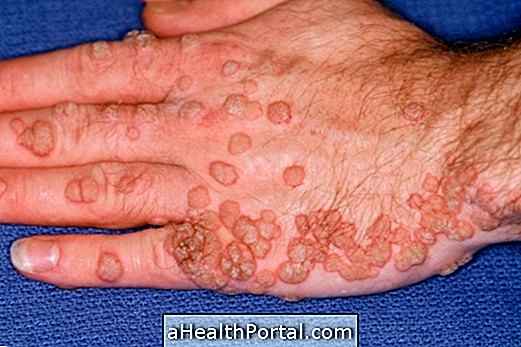


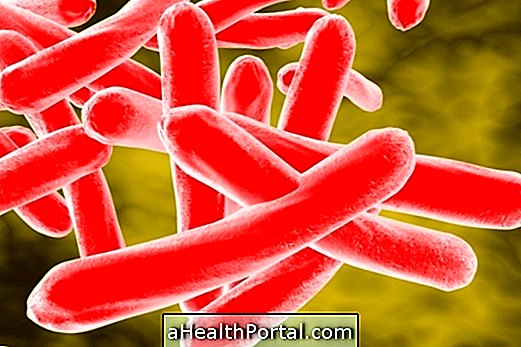
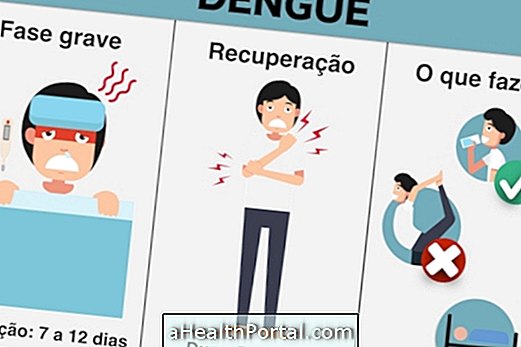


.jpg)












